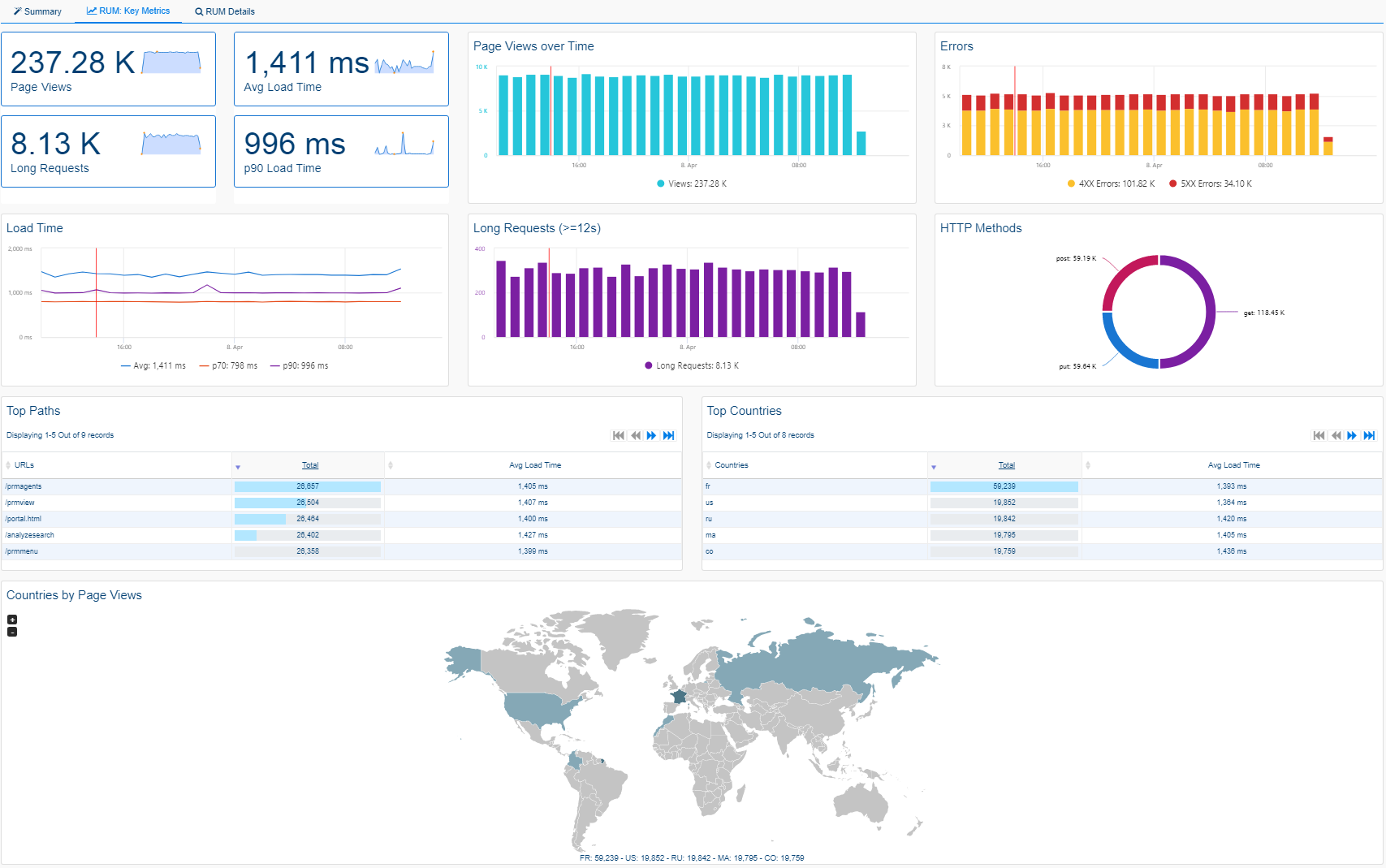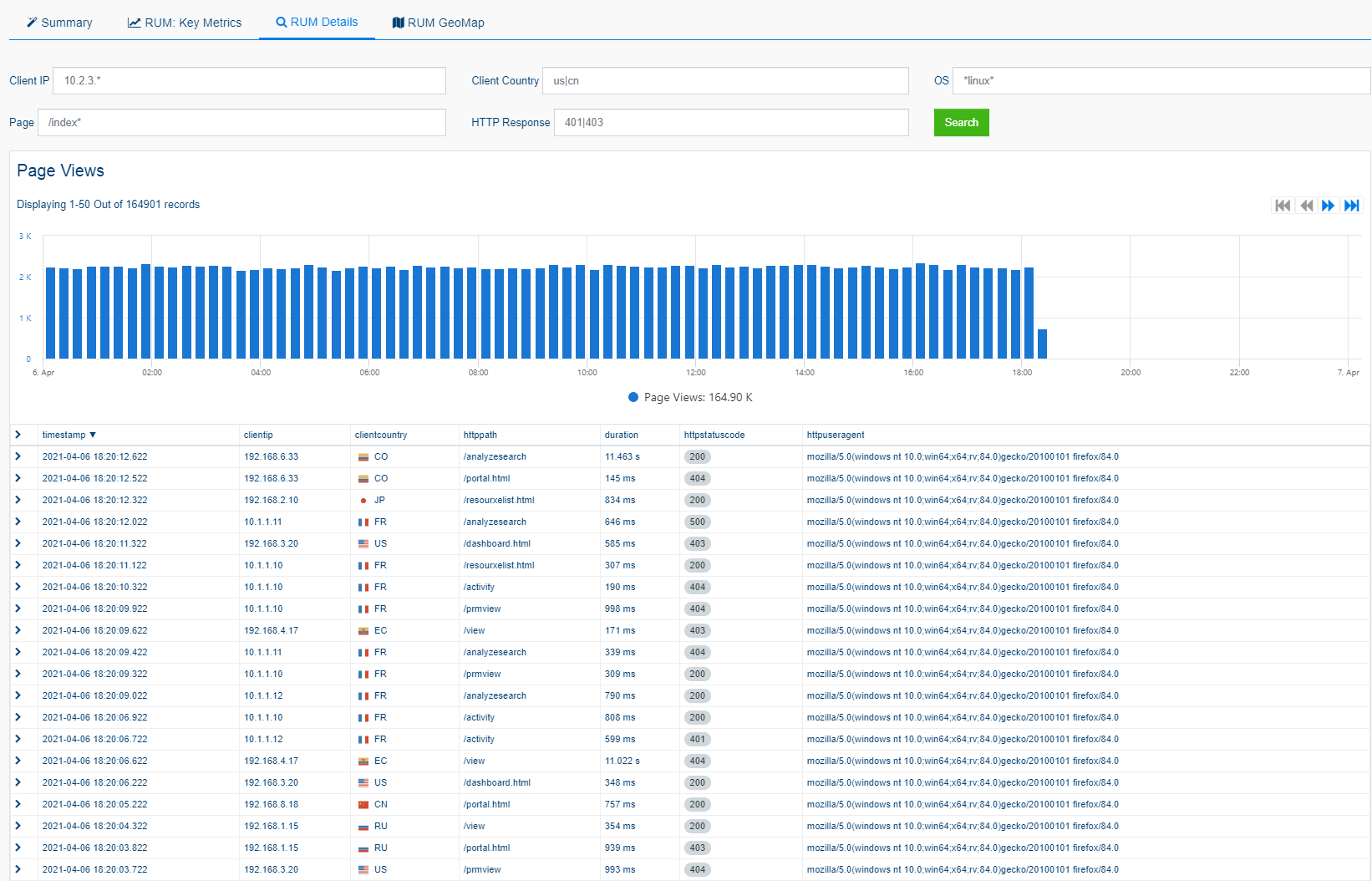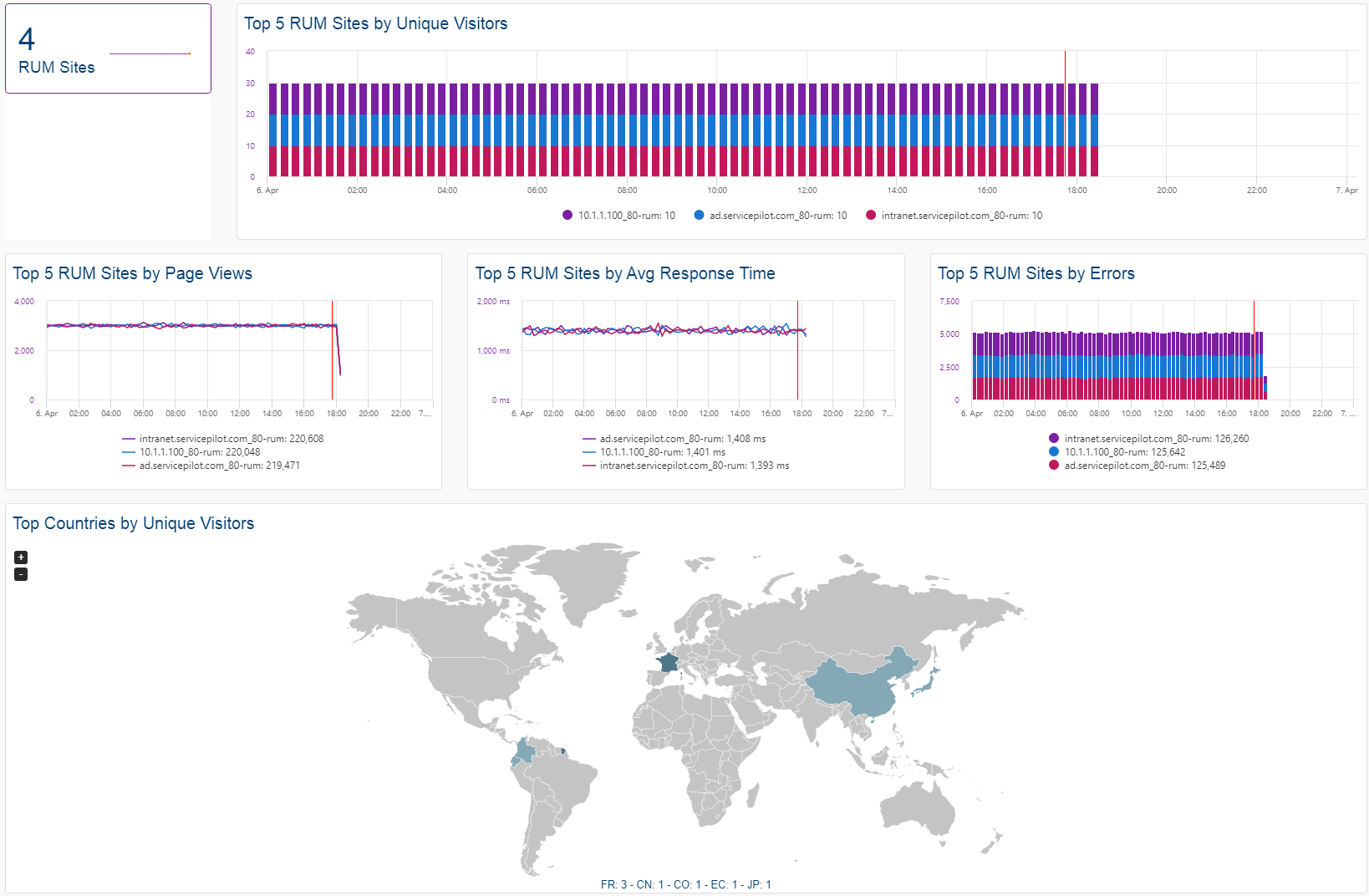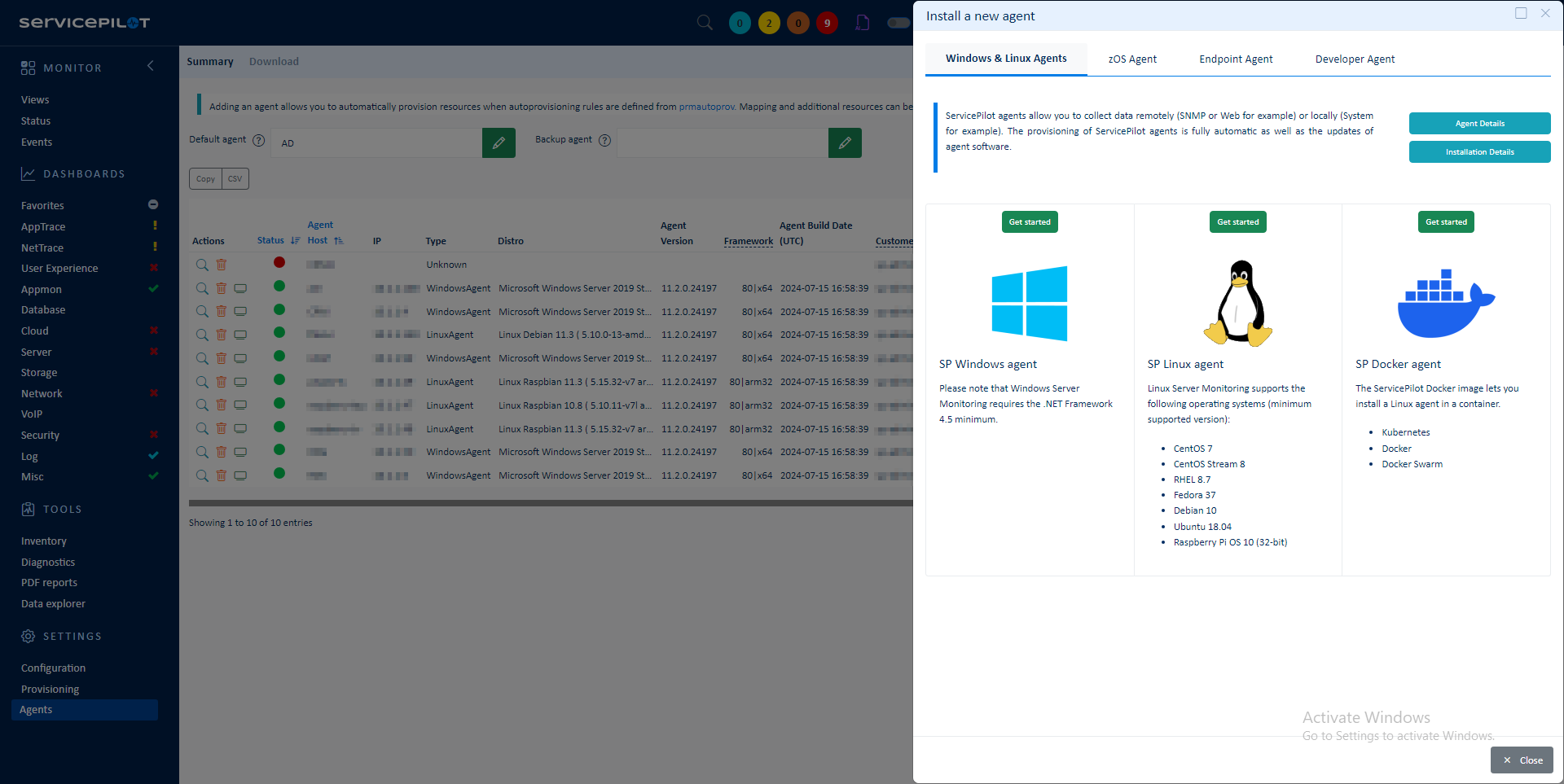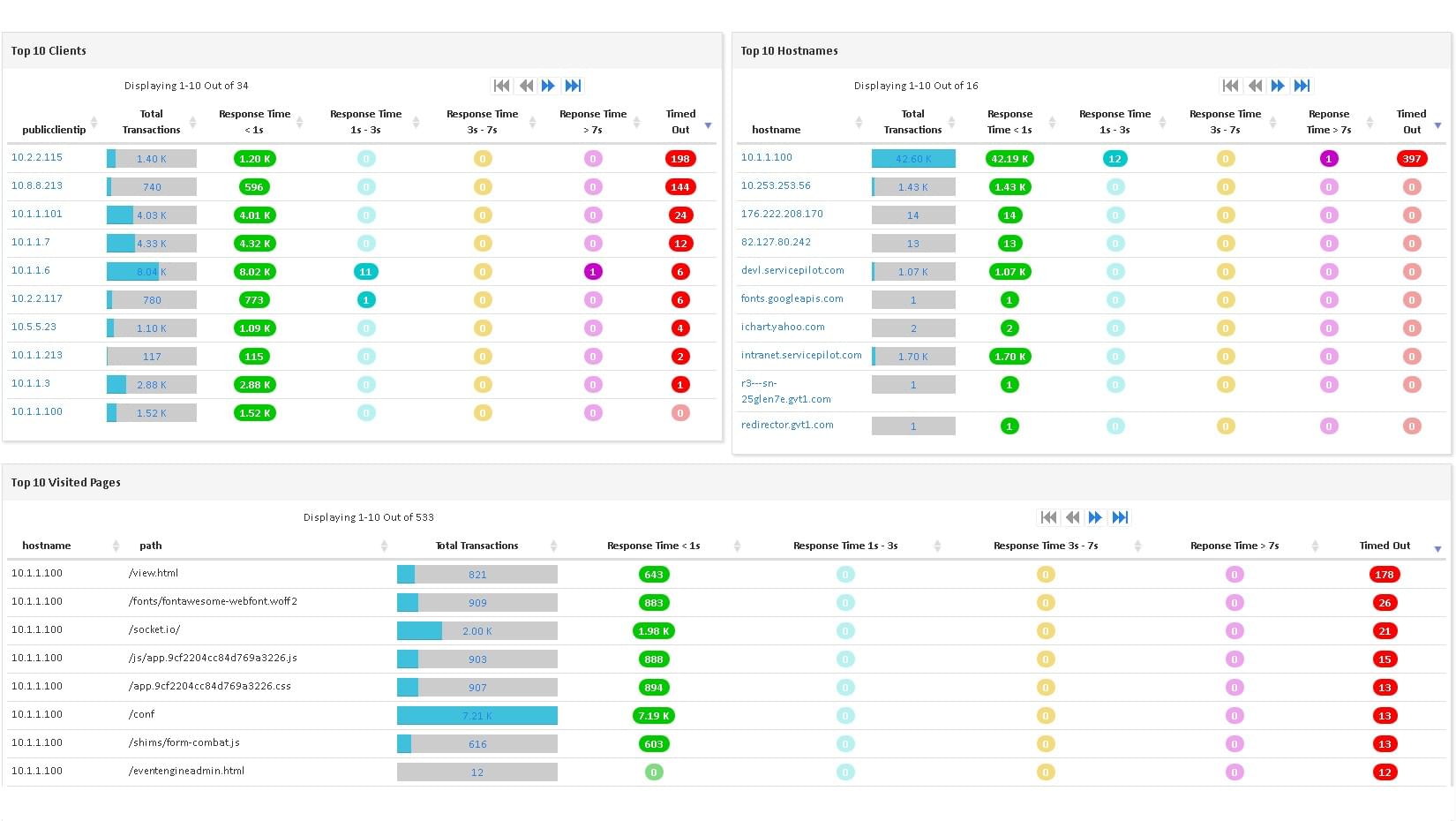What is Real User Monitoring (RUM)?
Real User Monitoring (RUM) is a form of passive web monitoring that collects and analyzes user interaction with a website or application. It provides insights into how end-users experience a website's performance, availability, and functionality in real-time. RUM is critical for understanding user experience and is often used to identify and troubleshoot performance issues.
RUM works by injecting a small piece of JavaScript code into each webpage. This script collects data about the webpage's performance and the user's interactions with it, such as load times, page views, user actions, and more. This data is then sent back to a server for analysis and reporting.
ServicePilot provides a Real User Monitoring package, known as RUM, which includes a JavaScript file that captures client experience and browser-side metrics. This data can be used to identify performance bottlenecks, understand user behavior, and improve overall user experience.
Some of the key metrics collected by RUM include:
- Page Load Time: This is the total time it takes for a webpage to load completely. It's a critical metric as slow load times can lead to user frustration and increased bounce rates.
- Error Rates: RUM can identify and track errors that users encounter while interacting with a website, helping to prioritize fixes and improvements.
- Geographical Performance: RUM can provide insights into how website performance varies by geographical location, helping to identify regions where users may be experiencing poor performance.
By providing a real-world view of user experience, RUM can help businesses optimize their websites and applications, improve user satisfaction, and ultimately drive better business outcomes.
How to monitor Real Web Users with RUM?
ServicePilot makes it easy to monitor interactions by simply adding a JavaScript file in web pages to send statistics to ServicePilot. A corresponding resource of the user-rum package then needs to be added via the ServicePilot web interface to receive information sent by the script.
The statistics gathered in this way include:
- HTTP response codes
- HTTP request types
- Established and timed-out requests
- Page load response time
- User Agent for Browser type and more
How to install a rum resource?
- Use your ServicePilot OnPremise installation or a SaaS account.
- Add a new rum resource via the web interface (
/prmviewsor/prmresources) or via API (/prmpackagespage), the default ServicePilot agent or another agent will be provisioned automatically.
Details of the rum package are located in the
/prmpackagespage of the software.
Benefits
ServicePilot enables you to deliver IT services faster and more securely with automated discovery and advanced monitoring features.
By correlating the technology RUM with APM and infrastructure monitoring, ServicePilot is able to provide a more comprehensive view of an organization's IT environment.
This allows IT teams to quickly identify and diagnose issues that may be impacting application performance, and take corrective action before end-users are affected.
Start with a free trial of our SaaS solution. Explore our plans or contact us to find what works best for you.

